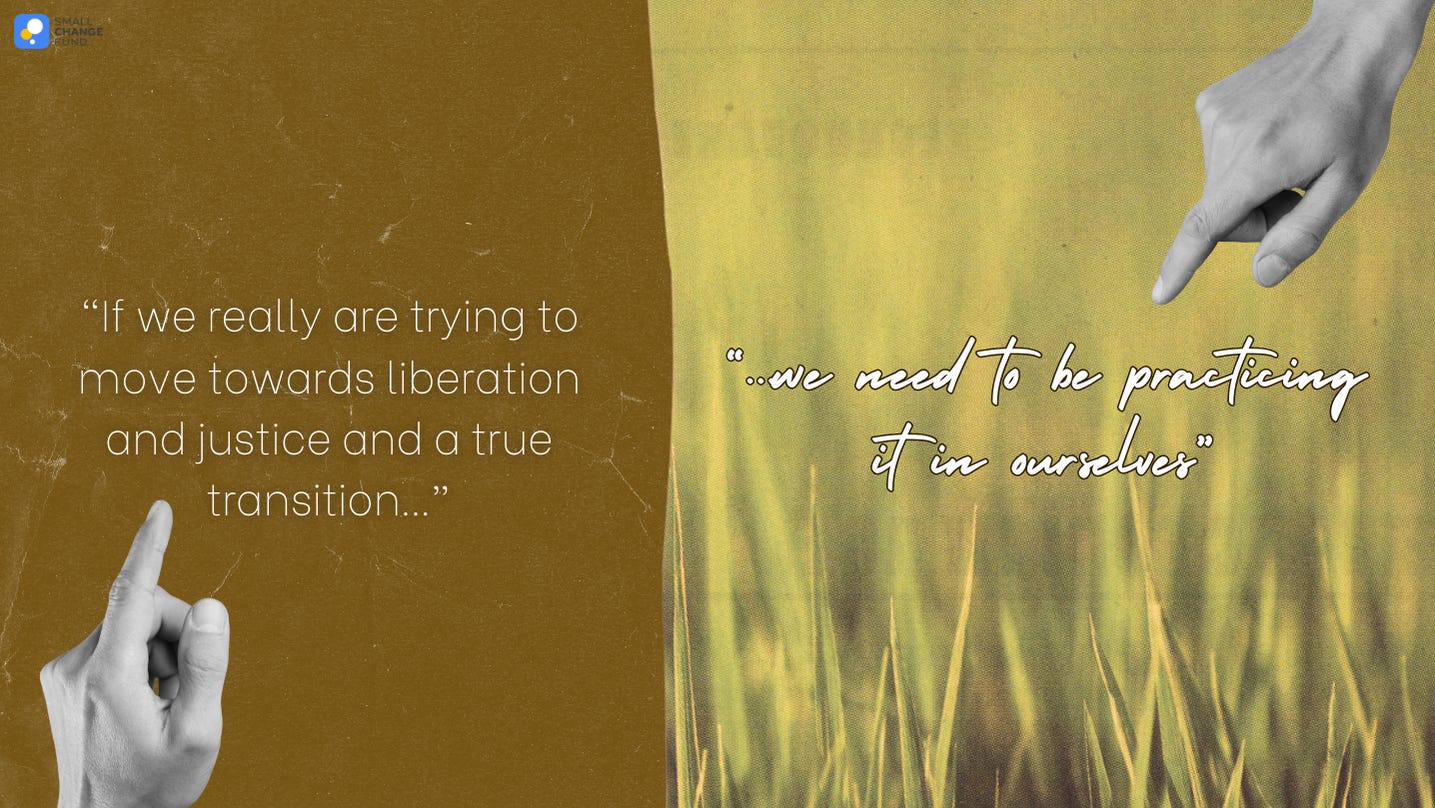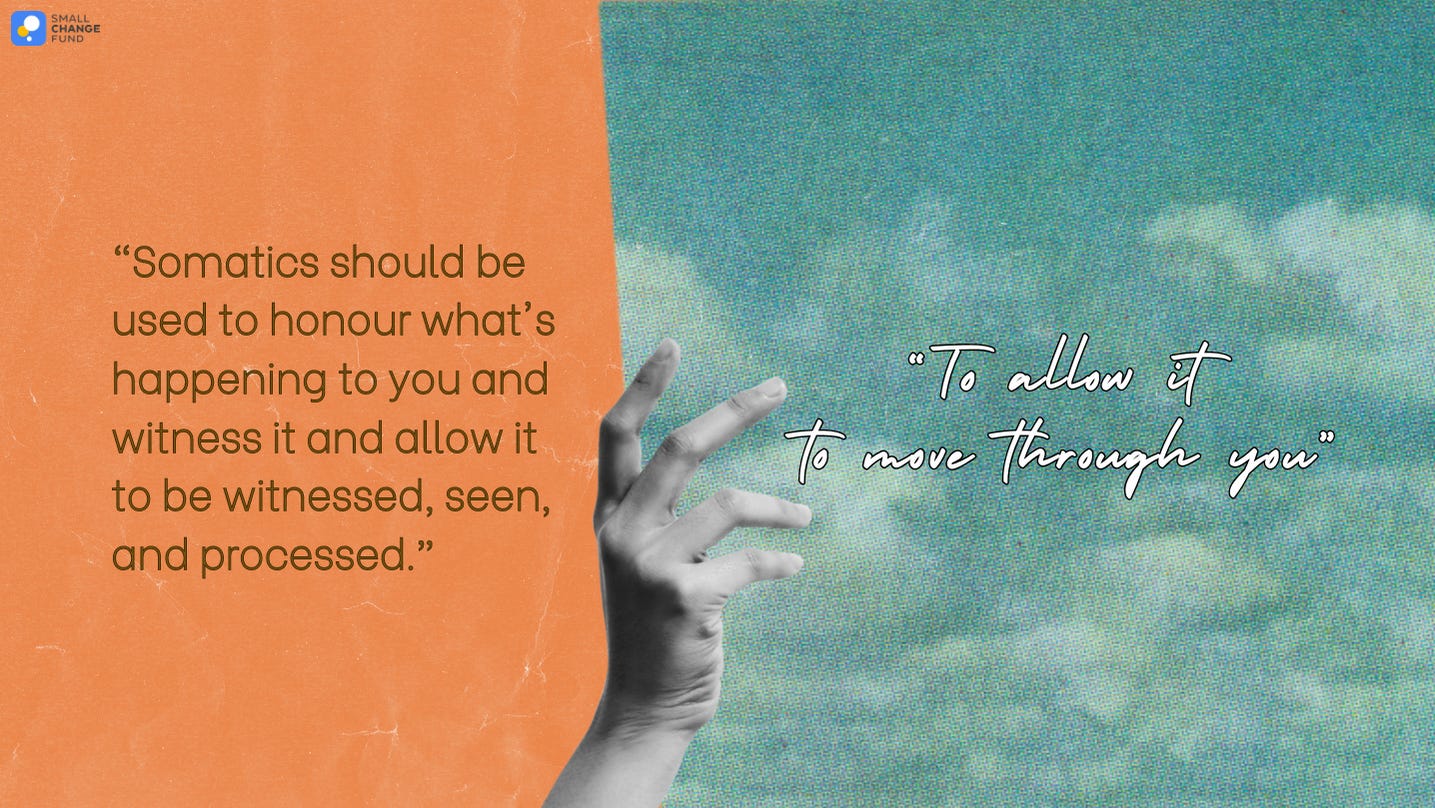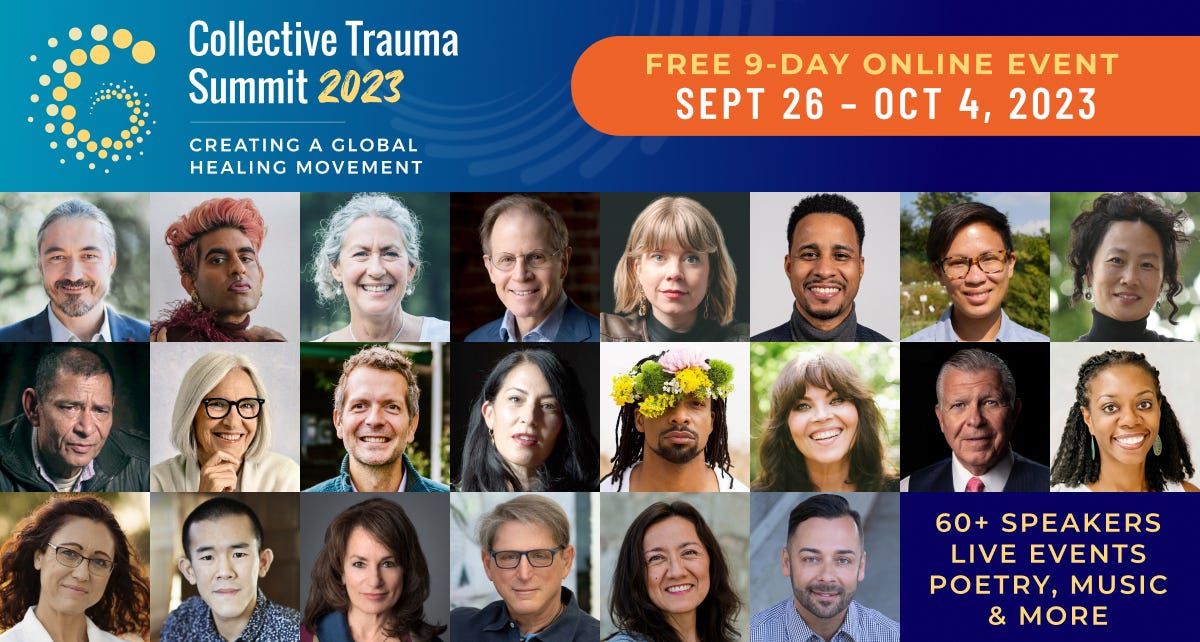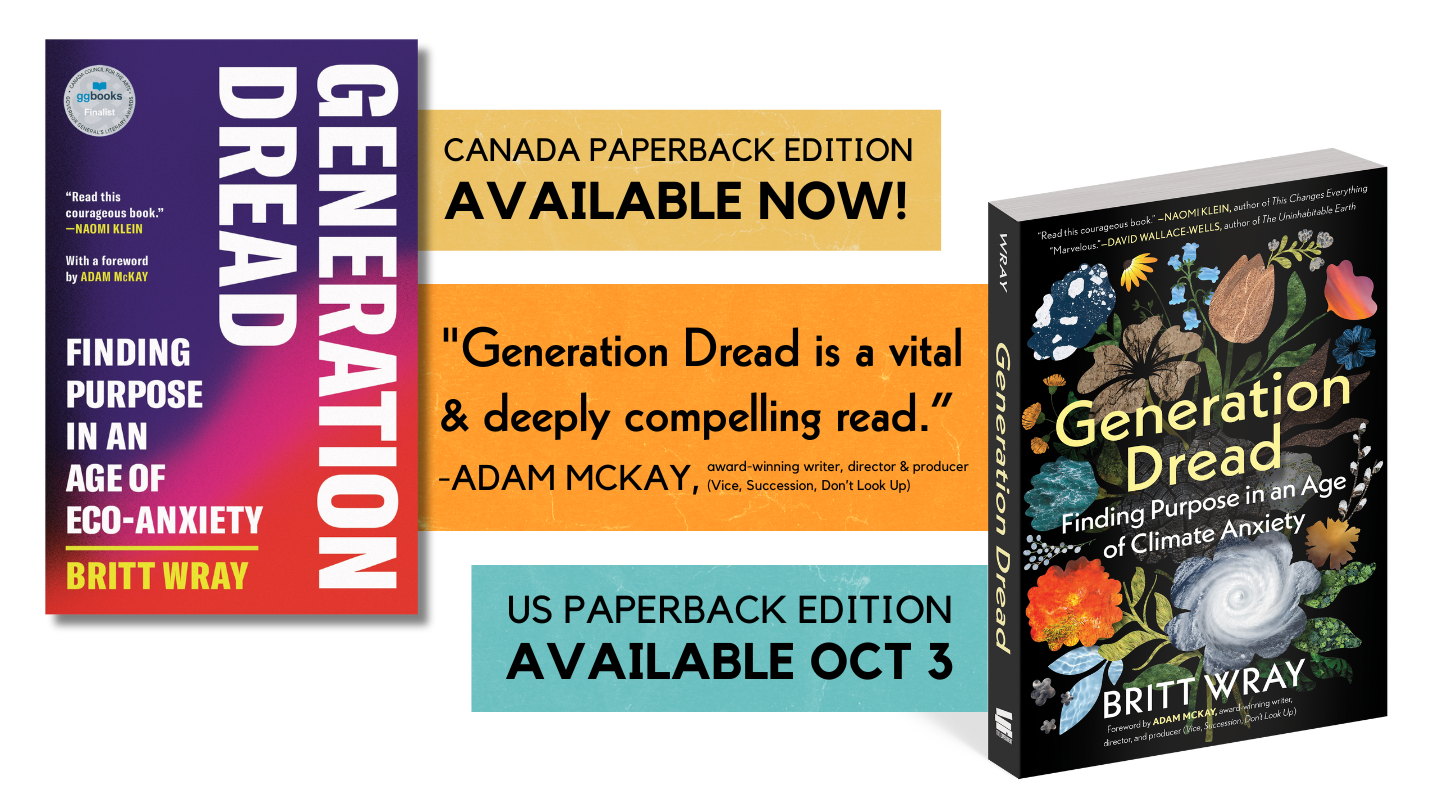How to bring your whole body to the climate justice movement
Somatic coach Selin Nurgün explains the surprising power of microactivism
Hi there!
Welcome to Gen Dread, a newsletter about how the climate crisis is making us feel, why that’s happening, and what we can do about it. Subscribe now to find community, comfort, and practical coping and acting strategies from experts all around the world.
The climate justice movement requires us to think deeply, creatively, and radically about how a new world might look. But are we making enough room in our day to feel how this emergency impacts and reverberates through our bodies? In the rush to save the planet, have we forgotten to take a minute to bring some intentionality to our daily interactions?
We had the honour of speaking to Selin Nurgün, a somatic practitioner who coaches activists to create space for more possibility in their work.
GD: Can you explain what somatic coaching is?
SN: “Soma” means felt sense. “Soma” is a Greek root for “of the body”. So we're talking emotions, thoughts, and sensations. It’s about repairing the perceived split of the body and the mind brought up through, and continued on in, colonization and racialization. We show up to life not in compartments – we show up in this whole system of a body with all this information that has been stolen from us.
Disembodiment is the name of the game and it's quite a reclamation to say, huh, actually, I have so much aliveness in me. Energy, heat, constriction, relaxation. What is all of that information? In somatics, we get curious around those sensations and what they're telling us. Our bodies are wired to respond to the world and give us information all the time. But oppressive systems and oppression in general really relies on our disembodiment.
How does a somatic approach help people involved in climate justice?
SN: This question is the crux of my work, because what I'm seeing is this: in social justice movements the dominant culture is urgency, scarcity, intensity, fueled by rage and fear. That has a purpose – boycotts, protests, confrontations – that is a strategy, that is one tool for making change. But when we’re so focused on the futuristic change, or the big bad wolf in the room that we maybe can’t even see or touch, we forget that we are pillars of the change ourselves.
Somatics and social change is micro. It's relational. It happens between interactions and with bodies and people. And so what happens with activists, especially if they’re just jumping into action or really in the flow of martyrdom and urgency, is that then they start to replicate the very systems that they want to push against. If we really are trying to move towards liberation and justice and a true transition, we need to be practicing it in ourselves. We need to feel what it's like to have that world. I think it's Audre Lorde who talks about rehearsing the worlds that we want to see. How the heck can we go towards something and build it if we don't know what it feels like?
Climate activists need to remember that your activism also shows up in your everyday life. However I'm showing up in my day into my relationships, my friendships, my family, even at work, those are also sites of change. And so you can pivot: how am I allowing more space into this moment? When I lower my shoulders and breathe before I respond to a request, how does that shift things?
This microactivism as well as understanding our felt senses and cultivating that connection, it ripples out to the world. It ripples out to your communities. It ripples out to people who come in contact with you. You're walking down the street. Someone sees that a body is more centered and grounded than theirs. We take note of that because we're wired to read each other's bodies. That is innate in us. And so the somatic approach to climate justice is about practicing and noticing what's happening every day and acknowledging that that does make a difference.
You were talking about how we need to disengage from that urgent energy. But in the climate justice movement, where we do have a very small window in which to make radical changes, it seems like there’s urgency inherently baked into the problem. How do we reconcile these two things?
SN: Yes, the work in itself is urgent, but social change and fighting oppression has never not been urgent. If I'm showing up to spaces, burnt out, irritable, angry, not respecting people's boundaries, what good am I doing to the movement? It’s a disservice to what’s possible.
Versus: taking a beat or practicing awareness and rooting into my sensations or visiting the rivers, the trees. That resourcefulness, that cultivation, allows me to show up and do really potent work in climate spaces. I'm not saying the urgency is not there. Of course it is. We acknowledge the facts and the science and the data. We literally see it outside our windows burning and flooding. It's awful.
And: I also acknowledge and understand that by remaining in an urgent body, I'm only replicating the tools of the oppressor. And because I don't want to do that, and because I want to do it differently and more filled with freedom and liberation, that's when I say, I'm going to do it differently. I'm not going to be pushed and pulled and prodded and do what they want me to do, which is show up exhausted and probably really close to the end of leaving movements.
We have to sustain ourselves for the long haul. So the urgency has to look differently. It has to feel differently. Everybody's answer can be different depending on what culture they come from, and what community, but I ask everyone: how can I respect urgency? How can I honour it, while not living in it?Can it be in the room with us? Can we say, hello, hi, I see you…and I want to practice the world I want to live in right now. Emergency is not a part of that, necessarily.
It’s been a rough summer for a lot of people, climate-wise. Are there any somatic techniques that you might offer people who are feeling really viscerally unsafe?
SN: Firstly, there's a bit of a trap with somatics getting popular and being used to adapt better to oppression. I never use somatics to “do this system better”. I never recommend doing it to override what's happening to you to reach some kind of calm state. Somatics should be used to honour what's happening to you and witness it and allow it to be witnessed, seen, and processed. To allow it to move through you. I offer somatics in order to actually turn up the aliveness of our sensations, because our sensations are smart and they're trying to tell us something. They're trying to tell us how to understand what the world is doing to us.
A lot of people ask how to calm and soothe climate anxiety but I'm like, turn it up. Turn it towards community. Turn it towards a journal – express it. I never tell people to ease or calm it. I think that's wild. Take a few minutes in the morning before you set out on your day and acknowledge the flooding of adrenaline. You're feeling an urgency of survival. That's extremely valid. It's very true.
And ask yourself what's happening to your body. What's the toll on your body? And in doing so, can you ask yourself what you're up for that day, just in the span of a day. Just in that 12 hours that you're awake in a day. What are you up for? Begin to notice, but also begin to feel. And that could be your breath. That could be the texture of your shirt. That could be your toes. If you can feel your toes or your belly differently, how can you show up to your day differently? What is your body saying yes to today? What is your body saying no to?
You will not always know an answer and that's okay. You can still engage with your day and show up in a lot of curiosity. And you’ll be surprised at how much information starts to come up and how much nourishment and abundance shows up to us. Even if you make a declaration at the beginning of the day like, “okay, I'm not sure what's going on with me, but I'm gonna look out for some clues and cues and sensations.” That is enough. That is enough.
Selin is currently taking clients for one-on-one somatic coaching sessions and will have some exciting workshops coming up soon that deal with the intersection of climate resilience and somatics.
If you liked reading this, feel free to click the ❤️ button on this post so more people can discover it on Substack 🙏🏼
Making Waves
The free Collective Trauma Summit 2023 includes talks and live online events about the emerging collective trauma issues of our time– climate activism, spirituality, fieldwork in conflict zones, trauma-informed leadership, journalism, and more. Join us for an all NEW online event with expert talks, live events, musical performances, poetry readings, movement sessions, guided meditations, and panel discussions where we’ll delve into Creating a Global Healing Movement from Tuesday, September 26 to Wednesday October 4.
As we take the first steps as a culture to become both trauma-informed and trauma-sensitive, it’s also important to become trauma-integrating. Make sure to join our own Britt Wray along with other speakers; Dr. Gabor Maté, Bob Delaney, Dr. Diane Poole Heller and Michael B. Beckwith. Their talks will be available to watch for free for 48 hours, from Thursday, September 28, 12:01 AM until Friday, September 29, 11:59 PM New York Time.
Join Climate Stories Project and participants from around the world for a 3-part training series to learn about climate storytelling, develop interview skills, and record and share climate stories.
The Climate Stories Ambassadors initiative is free and open to anyone with an internet connection. Following the initial online training, you'll take part in two additional online meetings to discuss your progress with other Ambassadors and learn from each other about using climate storytelling to promote an effective response to the climate crisis. Participants who submit their own story and at least one interview will receive a certificate of completion of the Climate Stories Ambassadors program.
The first online training of our fall 2023 cohort begins Wednesday, September 27, 2023 (12:00 noon-1:30pm, Eastern US time).
As always, you can share your thoughts and reach the Gen Dread community by commenting on this article or replying to this email. You can also follow along on Twitter and Instagram.
‘Till next time!
Britt Wray (Creator + Editor-in-Chief)
Sophie Kohn (Researcher + Writer)
Anis Annisa Maryam (Designer)
For the first time, we will soon accept your pledges to support us in dollars. We want to be clear: Gen Dread will always be free. The only thing that’s changed is that you have the option to donate to Gen Dread if it’s accessible to you and feels aligned with your values. Some readers have already left pledges, but we haven’t yet activated them. We plan to soon and are so thankful for your support.









Lots to think about and work with here. Thank you! Lx
i think this is really great bc i often feel like the existential dread of coming (and current) climate catastrophes makes it difficult to feel hopeful. the media silence on everything seems to perpetuate that as well. it always feels like there’s so much going against the climate movement and not many willing to stand up to it so i think it makes being the one to stand up even harder to do.